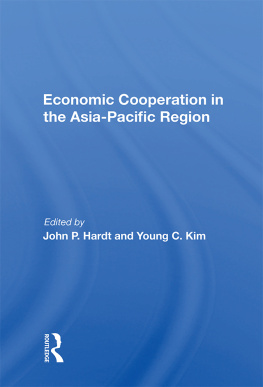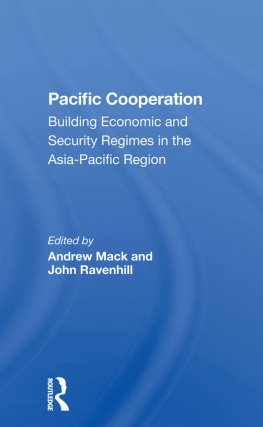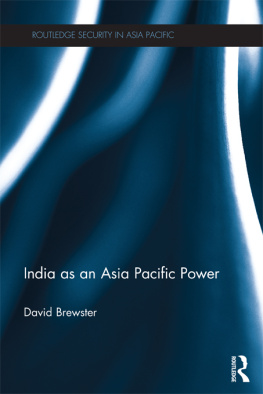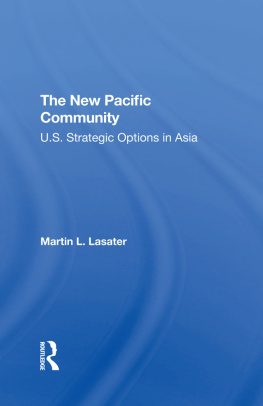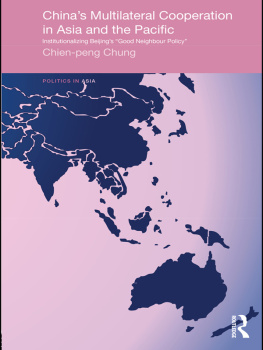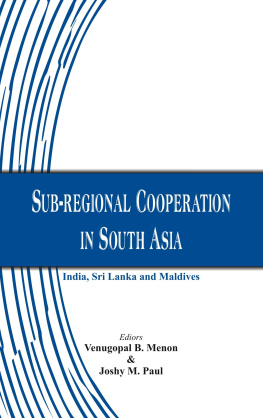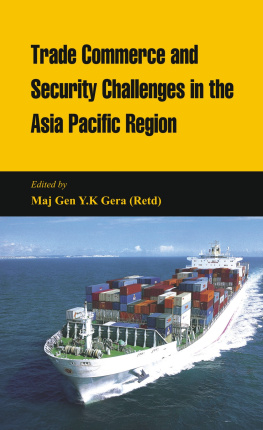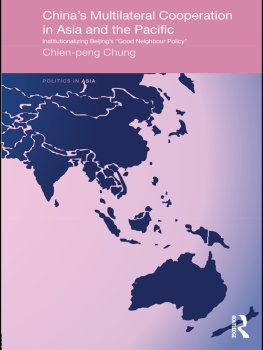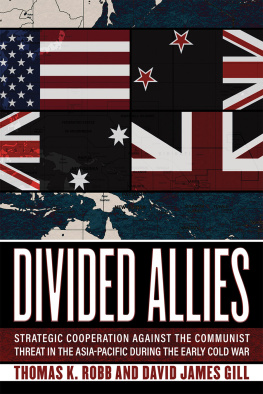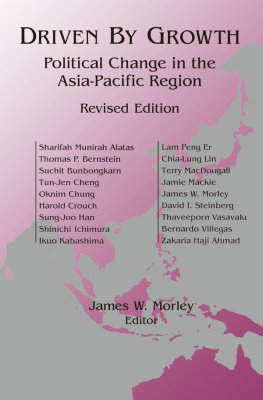First published 1990 by Westview Press, Inc.
Published 2018 by Routledge
52 Vanderbilt Avenue, New York, NY 10017
2 Park Square, Milton Park, Abingdon, Oxon OX14 4RN
Routledge is an imprint of the Taylor & Francis Group, an informa business
Copyright 1990 Taylor & Francis
All rights reserved. No part of this book may be reprinted or reproduced or utilised in any form or by any electronic, mechanical, or other means, now known or hereafter invented, including photocopying and recording, or in any information storage or retrieval system, without permission in writing from the publishers.
Notice:
Product or corporate names may be trademarks or registered trademarks, and are used only for identification and explanation without intent to infringe.
Library of Congress Cataloging-in-Publication Data
Economic cooperation in the Asia-Pacific region/edited by John P.
Hardt and Young C. Kim.
p. cm.
"Outgrowth of a series of meetings held in Washington, D.C., in
the spring and summer of 1989 under the auspices of The American
Council on Asian and Pacific Affairs, Inc. (ACAPA)"P. vii.
ISBN 0-8133-7941-5
1. AsiaEconomic policyCongresses. 2. Pacific AreaEconomic
policyCongresses. 3. Asian cooperationCongresses. 4. Asia
Foreign economic relationsCongresses. 5. Pacific AreaForeign
economic relationsCongresses. I. Hardt, John Pearce. II. Kim,
Young C.
HC412.E215 1990
337.5dc20 90-38668
CIP
ISBN 13: 978-0-367-01473-5 (hbk)
This volume is an outgrowth of a series of meetings held in Washington, D.C., in the spring and summer of 1989 under the auspices of The American Council on Asian and Pacific Affairs, Inc. (ACAPA). It contains the expanded versions of the papers presented at the final conference and therefore incorporates comments made by specialists from various academic research institutes and governmental agencies who attended the meetings. I would like to take this opportunity to express my appreciation to all the participants for their insightful analyses and stimulating discussions.
I would also like to express my gratitude to the Japan Economic Foundation for providing the research grant that partially supported this ACAPA program. Finally, I would like to thank the Ministry of International Trade and Industry of Japan for sharing the findings of the interim report of the Asia-Pacific Trade and Development Study Group, "Toward New Asia-Pacific Cooperation: Promotion of Multilevel Gradually Advancing Cooperation on a Consensus Basis" (June 1988); the Council for the Promotion of Asia-Pacific Cooperation (Japan) for sharing the findings of their report on "Toward an Era of Development Through Outward-Looking Cooperation" (June 1989); and the Study Group on a Japan-U.S. Free Trade Agreement (Japan) for sharing their report on "A Double-Track Approach Aimed at a Japan-U.S. Economic Cooperation Charter" (June 1989).
Young C. Kim
John P. Hardt
Under the best of circumstances, the Asia-Pacific region may well become the engine of global economic growth as we move into the twenty-first century. The Asian market-oriented economies, following the Japanese example, have modernized their domestic economies, raised living standards, and competed vigorously in the global market economy. Indeed, South Korea, Taiwan, and Hong Kong have emerged as global leaders in economic performance in recent years. The most populous country of Asia, the People's Republic of China, embraced the general principles of Western economic success in the post-Mao period by keying its plans toward modernization. The countries of Southeast Asia have also been pulled toward growth and improved economic health, primarily by Japan and the Newly Industrializing Countries (NICs).
The region has had no major military conflicts since Vietnam, and the prospects for resolution of differences by peaceful means and reduction in military burdens in most of the major Asia-Pacific countries are good to excellent. Even the Soviet Union may move away from its militarily driven Asia policy toward reconciliation and economic cooperation. Indeed, the global East-West confrontation is moderating and settlements of arms issues and conflicts between regional powers, Great Powers, and East-West are more likely than at any other time since the World War II settlements.
However, this favorable economic picture is clouded by troublesome problems that, if not resolved, could reverse the favorable prospects. On the global scene, Japanese economic competition may have replaced the Soviet military threat in the psychology of the European Community and North America. Moreover, some Asian countries, while benefiting from Japanese economic assistance and cooperation, still have a fear of economic domination that reflects their earlier concerns about military domination in the pre-World War II period. Although the European Community 92 and the North American Free Trade Zone are not solely regional economic alliances to counter the perceived economic threat of Japan, there is at least an element of protective competitiveness in the policies of these regional groupings. Major U.S. deficits and Japanese surpluses in trade accounts and investable funds are evidence of a realignment of economic power. And yet the policy adjustments in international institutions and in the global market structure have yet to be made. Japan has not yet taken or been accorded the institutional recognition and responsibility commensurate with its economic power and command of investable funds.
The integration of the Communist economies into the global market has proceeded more in rhetoric than in fact. The East European economies and the Soviet Union are tied to Western industrial economies more through economic policies of aid than through improved competition. The People's Republic of China has receded from political and economic modernisation and may be moving back to the policy of self-sufficiency and control that was so dominant in its former ideology.
Prospects for resolving the political-military sources of instability in Southeast Asianamely, in Cambodia; in northern Asia, with the continued confrontational division of the Korean peninsula; in the disputed Northern Territories; and in the Soviet Union, which still has substantial military buildupsare all troublesome. Each appears to be on the agenda of regional powers and Great Powers and is potentially resolvable in the years ahead. However, regression on any or all of these areas would have serious impacts on political security and economic growth and cooperation in Asia.
Thus a theme that runs through the individual assessments in this book is that under the best of scenarios the region may pull itself and the global economy toward higher levels of performance through structural change and competitive trade. Indeed, the region may live up to its name as a "pacific" area of the world. However, in order to bring about this favorable scenario, decision makers in Tokyo, Washington, Brussels, Moscow, Beijing, and elsewhere will have to take steps to ameliorate the serious economic and political problems threatening growth and stability. If they do not, the engine of growth and stability may work in reverse. Instead of becoming a leader in economic progress and a major contributor to a liberal global market, the Asia-Pacific region may face economic and political confrontation and instability. The contributors to this book do not make prescriptions to those who gather in Asia-Pacific policy councils, the economic summits of major Western economic powers, East-West summits, or the myriad of bilateral meetings, but those decision makers and other readers will gain insights on the issues that are likely to influence the search for solutions.


